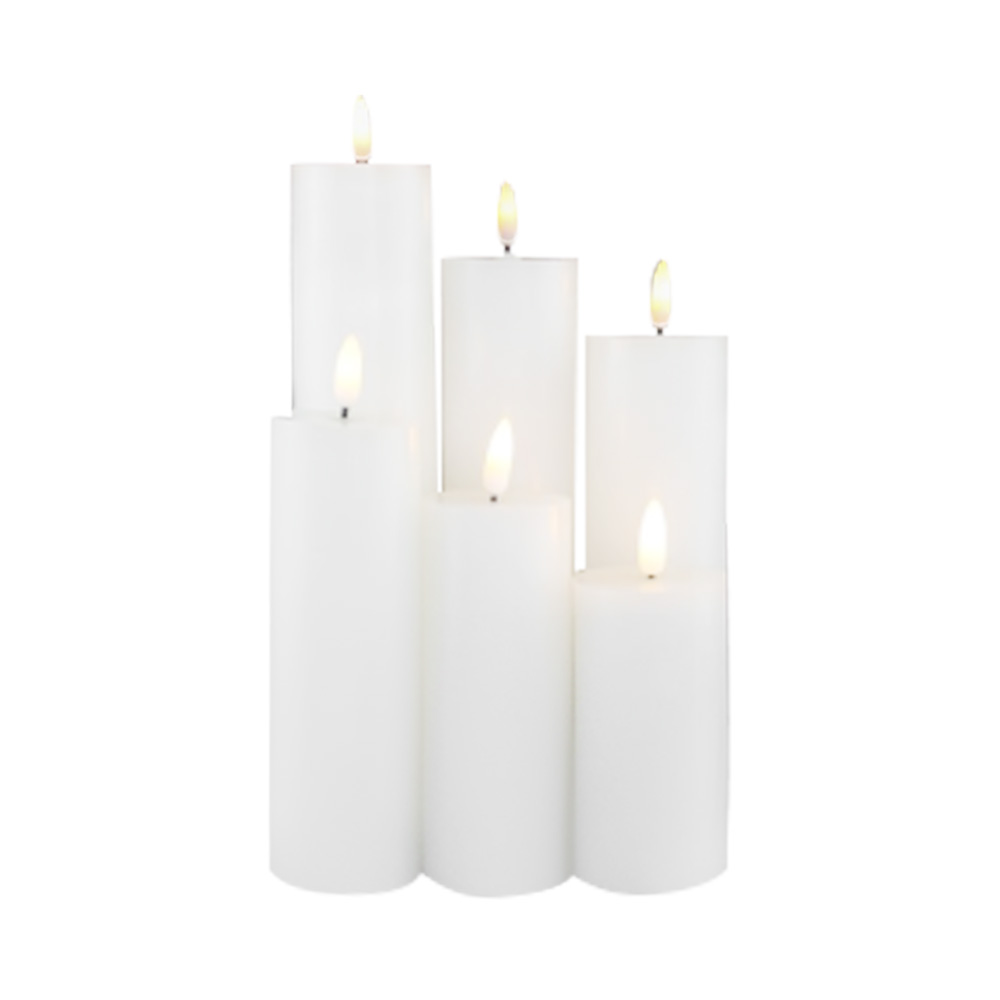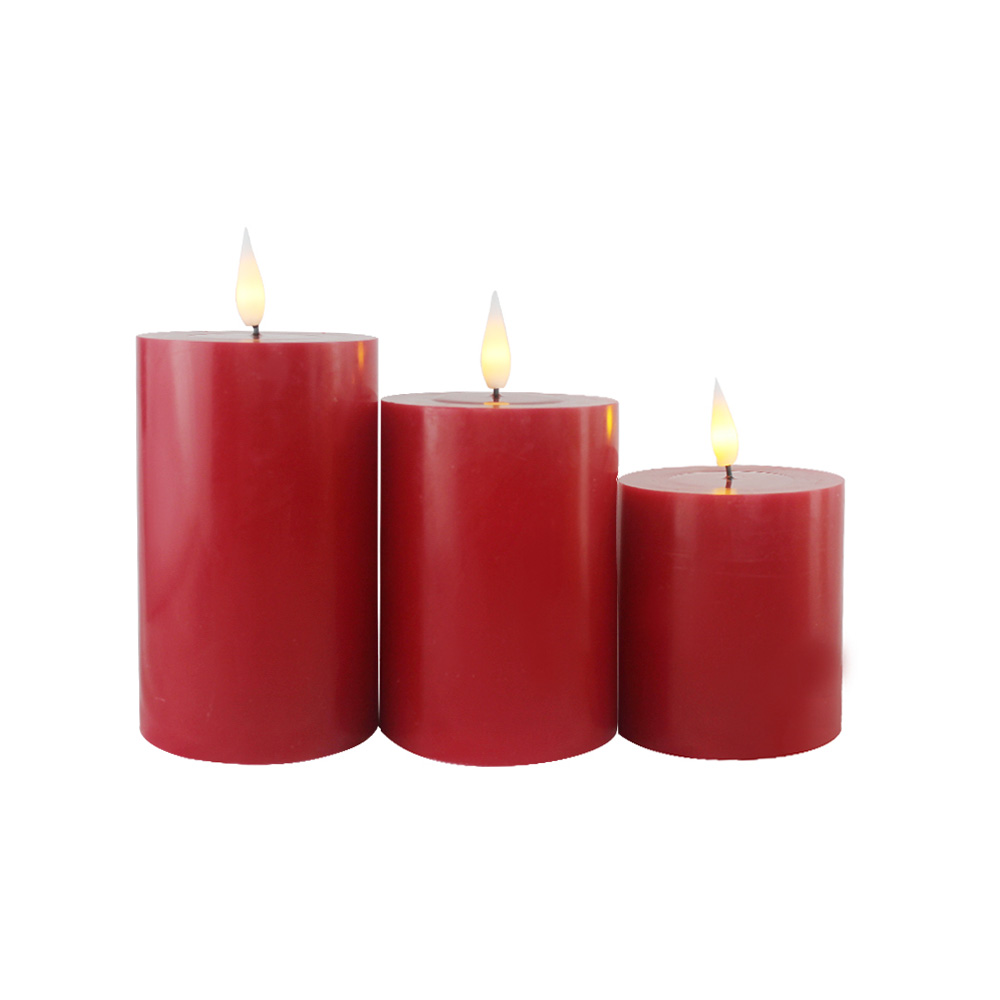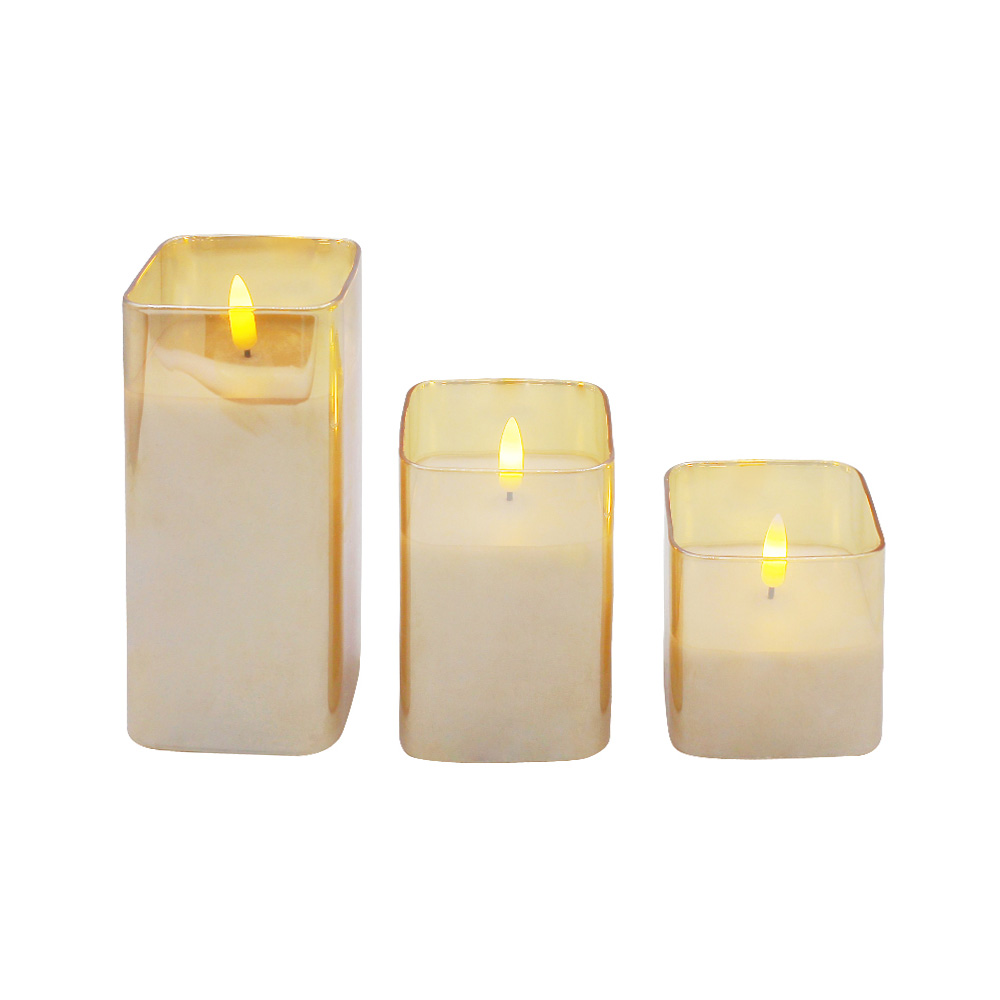Are LED electronic candles more environmentally friendly than traditional candles in terms of energy consumption and material recyclability?
The energy source of LED electronic candles is batteries or charging systems
LED electronic candles usually use dry batteries or built-in rechargeable batteries as energy sources. Their working principle is to drive LED lamp beads to emit light through tiny currents. During use, there is no need to consume physical fuel through combustion, thus avoiding the emission of exhaust gas and particulate matter generated during the combustion process. Although the battery production and charging process also involve certain energy consumption, overall, the efficiency of LED electronic candles is relatively high in terms of energy consumed in a single use, especially in long-term or repeated use scenarios.
Traditional candles release heat and light sources by burning wax bodies
Traditional candles mainly rely on solid wax materials such as paraffin, beeswax or vegetable wax to release light and heat through open flame combustion. Its use process will emit carbon dioxide, a small amount of carbon monoxide and incompletely burned organic particles. Especially when used for a long time in a closed space, these emissions may affect air quality. Although the emissions of a single candle are not high, the cumulative emissions are worth paying attention to in scenarios of frequent or large-scale use.
The energy efficiency of LED electronic candles is relatively high
LED lamp beads themselves have high luminous efficiency and can maintain stable brightness at a lower voltage. Take an ordinary button battery-powered LED candle as an example. It can often provide continuous lighting for dozens of hours or even longer. If a rechargeable battery is used with an intelligent control system, its energy consumption performance will be further optimized. In contrast, a traditional candle is basically scrapped after burning for one hour. Therefore, from the perspective of light output per unit time and energy efficiency, LED products have advantages in energy saving.
Paraffin wax used in traditional candles is a non-renewable resource
Most commercially available traditional candles use paraffin wax as the main material, which comes from petroleum and is a non-renewable resource. The refining process of paraffin wax consumes a lot of energy and is accompanied by certain environmental pollution risks. Some relatively environmentally friendly alternative materials such as beeswax and soy wax are natural, but they have limitations in production and processing costs. In addition, these natural materials will still release carbon dioxide after burning, making it difficult to fundamentally solve the problem of carbon emissions.
Some parts of LED electronic candle materials are recyclable
LED electronic candles are composed of plastic shells, circuit boards, LED lamp beads, batteries and other components. The plastic shell is mostly made of ABS or PVC materials, which can be sorted and recycled under certain conditions. LED lamp beads have a long life and are not easy to damage; while the battery part needs to be properly handled, the use method that complies with recycling regulations can reduce resource waste. Although the recycling process is relatively complicated, in theory, its material reuse potential is higher than the residue after the candle is burned.
The solid residues produced after the traditional candles are burned out are not easy to recycle
The wax oil residues and candle wick residues left after the use of traditional candles are usually discarded directly, lacking an effective recycling mechanism. Some residual wax may adhere to glass cups and metal trays, which is inconvenient to clean and not suitable for remelting. In particular, candles with scents, dyes or added metal cores have complex ingredients and are even less suitable for recycling. These residues are easy to enter the domestic waste system during the processing process, increasing the burden of landfill or incineration.
LED products have a cycle advantage in terms of service life
LED electronic candles usually have a long service life, and a good quality LED chip can last for thousands of hours under continuous lighting conditions. In contrast, traditional candles will continue to reduce in volume after each lighting, and are disposable items that need to be replaced within a short period of time. From the perspective of the life cycle, LED electronic candles can reduce the frequency of replacement in the same period of time, save resource consumption, and reduce the carbon footprint caused by transportation and packaging.
LED electronic candles are safer and more environmentally friendly without open flames
Since LED electronic candles do not rely on combustion, there is no open flame during use, and no smoke or odor will be generated. This feature not only improves the safety of home use, but also avoids the impact on indoor air quality. In contrast, traditional candles have the risk of causing fires, especially when they are unattended or close to flammable materials. From the perspective of safety and environmental protection, the fire-free structure has practical application advantages.
Battery handling is a key factor in the environmental protection of LED products
Although LED electronic candles have advantages in energy consumption and reusability, battery handling is still a key factor affecting their environmental protection. Some low-cost products use non-rechargeable alkaline batteries, which may bring the risk of heavy metal pollution if they are not sorted and disposed of. Therefore, choosing rechargeable battery products and complying with battery recycling regulations are issues that users should pay attention to in improving environmental protection.

Ningbo Weizhi Electronics Co., Ltd.
- We will be pleased to provide products with high quality, reasonable price, punctual delivery and best service for you!
GET A QUOTE
Building 2, No. 2477, Cihai North Road, Xipu Town, Zhenhai District, Ningbo City, China
-
 +86-18067520996
+86-18067520996
-
 +86-574-86561907
+86-574-86561907
-
 +86-574-86561907
+86-574-86561907
-
 [email protected]
[email protected]
- +8618067520996
- +86 18074202116
Copyright 2024 Ningbo Weizhi Electronics Co., Ltd. All Rights Reserved.




 English
English Deutsch
Deutsch







